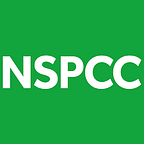Supporter Journeys: The nut every charity wants to crack
Hi, I’m Anna, Supporter Experience Strategist at the NSPCC, the UK’s leading children’s charity fighting to prevent child abuse.
Last month I hosted our first ever Supporter Journeys Summit. The Event saw supporter journey specialists from twenty-four charities come together to discuss best practice and the challenges of implementing supporter journeys.
Those present understood the value of having supporter journeys but if you’re in doubt let me summarise.
If you promote the sale of Christmas trees in June to a Buddhist population, you’re not too likely to make much money. You’re also going to annoy a lot of people.
For both consumers and charities, you have a much better chance of engaging positively with supporters if you are saying the right things at the right time to the right people. Supporter journeys provide the framework to facilitate this.
Thanks to some brilliant speakers and some excellent questions, we had an informative and inspiring day together. So much so, we are looking to repeat the event bi-annually.
So, what did we learn on the day?
We are all struggling with the same challenges
Every charity is struggling with similar challenges and questions. For example,
- How can we meaningfully measure the supporter experience?
- How do you compete with other internal budgets if there isn’t an immediate ROI?
- How do you change the internal culture to think more about LTV?
- How can we get a holistic view of all potential journeys and how they interact?
Micro Journeys
The majority of charities attending have a supporter journey strategy in place using “micro journeys”; journeys specific to a given product or process. A common journey many have built is a welcome journey for different types of support, ensuring supporters are thanked and brought into the fold. An example of this could be a series of emails for marathon fundraisers with training help and fundraising tips. What was less clear for everyone were the macro journeys.
How do we coordinate journeys across teams to avoid clashes, but also to create a more seamless and less siloed stewardship plan?
Some organisations start with micro journeys and then work their way up to define the macro journeys, but very few work the other way round. A different approach included my new supporter journey proposal for the NSPCC. This strategy uses a new data-led model to amalgamate content from all teams to create one overarching structure for communications. We would use next-best-product algorithms to generate tailored content for supporters rather than assigning content based on organisational priorities and previous engagement alone. This strategy addresses the risks of a multi micro journey approach, but seems to be a first for the sector, meaning there are plenty of bugs and hurdles to overcome to deliver it.
Donor in the room
Several charities have taken steps to shift the organisational thinking to become more supporter-centric. One charity has started including an empty chair at board meetings and planning meetings to symbolise the supporter. This forces the charity to always think about how messages will land with specific kinds of supporters receiving communications, but also to keep staff in a constant ‘conversation’ with the supporter at work.
A common way of keeping the donor at the forefront for many charities was by using personas. Personas have been incredibly useful for developing micro journeys, but can sometimes be limiting when looking at developing macro journeys. If a charity hasn’t done a lot of cross-organisational promotion, the personas may reflect the siloed audiences that already exist, not the multi-faceted supporter they could be.
Measuring success is key
Having a meaningful quantitative way of measuring the success of a supporter journey strategy is the holy grail. This could be through automated dashboards bringing together website data, email engagement stats, pipeline conversion, and retention; or by measuring supporter satisfaction using an annual survey. We all agreed it is vital is to have quantitative and qualitative measures in order to determine supporter journey success
Despite these challenges, there is much to be excited about.
With new innovations and strategies being tested, it feels like charities are approaching the tipping point — going from talking about supporter journeys to really testing and delivering.
